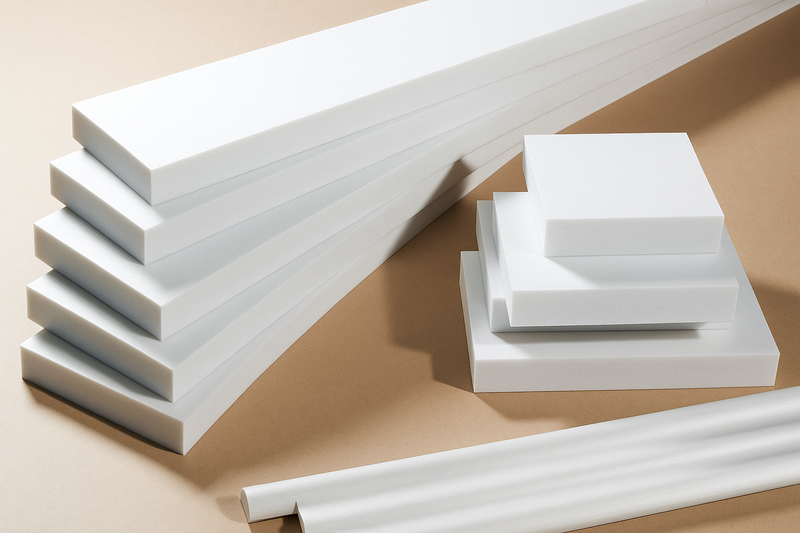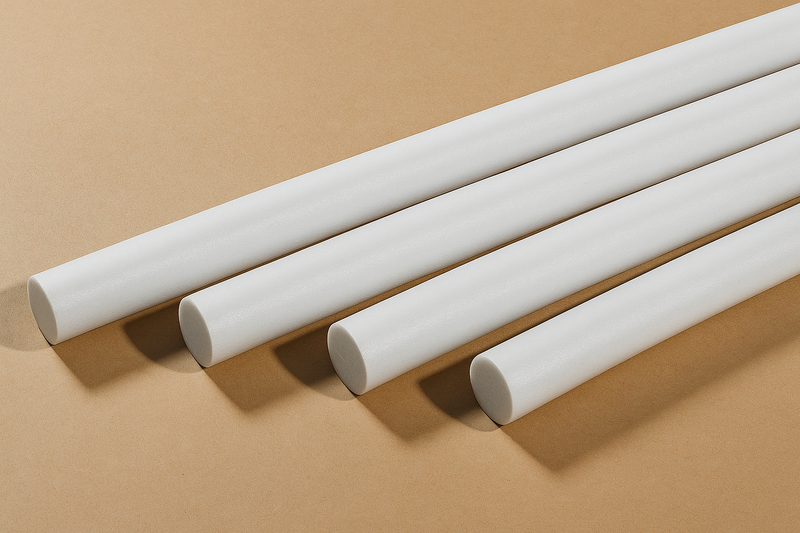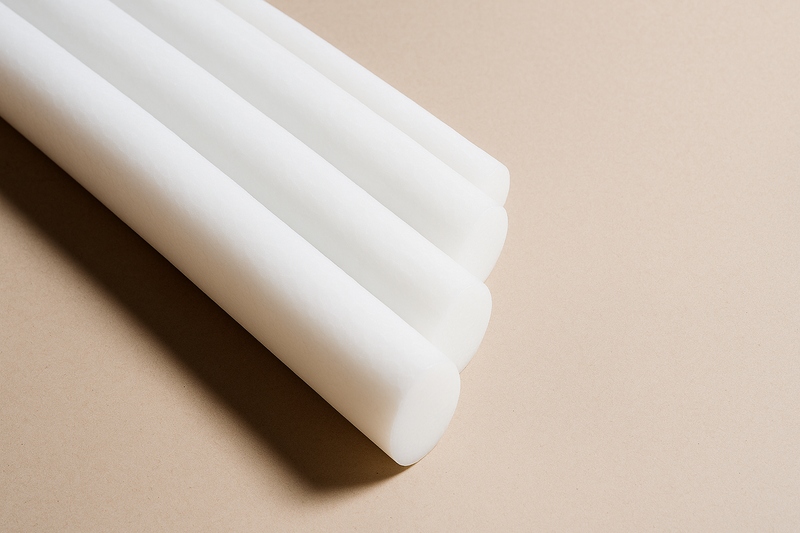At a glance
- Engineering plastics are much lighter than metals and help improve energy efficiency.
- They resist corrosion and chemicals without needing coatings or treatments.
- Other benefits of engineering plastics include lower wear, better insulation, design flexibility, noise and Vibration Dampening, and reduced costs.
- Comparison table between Engineering Plastics vs. Metals
- Real-life industry applications where engineering plastics outperform metals.
Is metal really the best material for every engineering application anymore?
For decades, metals have been the go-to for strength, durability, and reliability. But times are changing. With rising material costs, complex manufacturing needs, and growing pressure to reduce weight and improve corrosion resistance, more Australian engineers and manufacturers are turning to engineering plastics as a smarter and more efficient alternative.
If you’re curious whether plastics could outperform metals in your line of work, keep reading. This article digs into key advantages of engineering plastics that make them a better fit for modern engineering, from wear resistance to cost savings.
Key Advantages of Using Engineering Plastics Over Metals
Weight Reduction
One of the most compelling reasons to choose plastics over metals is their significantly lower weight. This substantial weight reduction helps improve energy efficiency, especially in transportation sectors such as the automotive and aerospace sectors. Their lightweight properties also enhance ease of handling during manufacturing and assembly.
For example, in moving systems like robotic arms, conveyors, and rotating shafts, replacing metal parts with Acetal plastics (POM)can help lighten the load on motors, improve speed, and reduce wear over time.
Most importantly, despite the reduced mass, engineering plastics have a high strength-to-weight ratio, ensuring that strength is not compromised.
Read More: Understanding the Impact of Molecular Weight on Engineering Plastics Performance
Corrosion and Chemical Resistance
Plastics outperform metals in harsh environments. Unlike metals, which often corrode or oxidise over time, engineering plastics exhibit inherent resistance to rust and chemical degradation. This makes them a reliable choice for demanding environments in marine, medical, and industrial environments where exposure to moisture, acids, or solvents is frequent.
For instance, PTFE plastic resists all industrial acids, bases, and solvents, making it suitable for chemical tanks and valves. In contrast, metals like steel often need protective coatings or treatments to prevent corrosion in similar conditions.
Superior Wear and Friction Properties
Certain engineering plastics, such as UHMWP (Ultra-high molecular weight polyethylene) and PEEK sheet (polyetheretherketone), offer excellent abrasion resistance and low friction coefficients. They outperform metals in dynamic and moving applications.
This feature significantly reduces the need for lubrication and increases system reliability in applications like bearings, gears, and wear strips.
Thermal and Electrical Insulation
Plastics are naturally good insulators, both thermally and electrically. This insulating property is crucial in electrical, electronic, and automotive applications where insulation is needed to prevent short circuits or control heat flow. Unlike metals, which conduct electricity and heat, plastics can avoid electrical shorts and overheating.
This is especially important in designing safe, high-voltage components, switch housings, sensor enclosures, and PCB supports. Materials like Polycarbonate plastic and polyamide (Nylon) are commonly used in electrical switchgear and circuit breakers due to their high dielectric strength and thermal resistance.
Read More: The Difference Between Mechanical, Thermal, and Electrical Properties of Engineering Plastics
Design Flexibility and Complex Shaping
Engineering plastics offer far greater design freedom than metals. They can be moulded into complex shapes, integrate multiple components into a single part, and allow for intricate features that would be difficult or impossible to achieve with metal fabrication.
As a result, this flexibility streamlines the assembly process, reduces the number of parts, and enables innovative product designs. It also allows engineers to prototype quickly and easily adjust designs, shortening development cycles.
Lower Manufacturing and Lifecycle Costs
While some high-performance plastics may have a higher initial material cost than certain metals, they often lead to lower total lifecycle costs. The production of plastic parts, especially through injection moulding, is generally faster and more cost-effective than metal machining or casting. In many cases, plastic parts often require fewer secondary operations, such as finishing or assembly, further reducing costs.
In addition, due to their resistance to corrosion, fatigue, and many forms of wear, engineering plastics can offer longer operational lifespans in certain applications. As a result, savings come from reduced machining, faster assembly, lower shipping costs due to lighter weight, and fewer failures in corrosive or high-wear environments.
Read More: How choosing high-quality engineering plastic sheets and rods can save your business money.
Noise and Vibration Damping
Metals often amplify noise and vibration. However, plastics absorb vibration and attenuate noise, key in applications involving impact, oscillation, or mechanical motion.
Plastics such as TPES, acetal, and nylon composites are widely used in gears, engine mounts, panels, and housings where noise reduction and vibration control are important. These materials help protect mechanical systems from wear, extend component life, and improve the comfort and safety of end-users.
Environmental and Sustainability Considerations
Engineering plastics support sustainability goals in the engineering industry. Their low weight helps reduce energy consumption in transport or motor-driven systems. Many engineering plastics are also recyclable or sourced from bio-based materials, making them more environmentally responsible.
Moreover, compared to metal machining, engineering plastic manufacturing processes typically generate less material waste, as plastics can be moulded with high precision and minimal excess. So, by replacing steel or aluminium with plastics in mechanical assemblies, manufacturers can lower overall environmental impact.
Comparison Table: Engineering Plastics vs. Metals
|
Property |
Engineering Plastics |
Metals |
|
Weight |
Lightweight |
Heavy |
|
Corrosion Resistance |
Excellent, no rust |
Prone to rust and corrosion |
|
Wear and Friction |
Low friction, excellent wear |
Requires lubrication, wears faster |
|
Thermal Conductivity |
Varies by grade |
High tolerance, but a good conductor |
|
Electrical Insulation |
Excellent |
Conductive |
|
Design Flexibility |
Easily moulded into complex parts |
Limited to machining and casting |
|
Manufacturing Cost |
Lower overall lifecycle cost due to processing ease |
Higher due to machining, etc. |
|
Noise and Vibration Damping |
Excellent, built-in damping |
Poor often need separate dampers |
|
Environmental Impact |
Improving, recyclable and lower emissions |
Energy-intensive, harder to recycle |
Industry Applications: Where Engineering Plastics Outperform Metals
Now, let's look at real-life industry applications where the benefits of replacing metal parts with plastic are evident.
- Mechanical Engineering: In mechanical systems, Acetal gears and UHMWPE bearing strips reduce wear in conveyors and automation systems.
- Electrical Engineering: ABS and polycarbonate (PC) materials are widely used plastics in electronics manufacturing for insulating panels, switchgear covers, and cable organisers.
- Aerospace Engineering: Advanced plastics like PEEK and PEI are replacing metals in interior fittings, structural brackets, and fasteners due to their high strength-to-weight ratio and resistance to fire.
- Robotics and Automation: In high-speed robotic systems, plastics such as nylon (PA), acetal (POM), and ultra-high-molecular-weight polyethylene (UHMWPE) are used for joints, sliders, and housings. They ensure smooth, low-friction motion with minimal noise and maintenance, which is ideal for repetitive and fast-moving parts.
- Tooling and Fixturing: Machined acetal and HDPE plastics are widely used in jigs, fixtures, and protective guards. Their low surface friction, chemical resistance, and dimensional stability make them perfect for contact applications where metal might cause damage, marking, or added weight.
It sums up that engineering plastics offer clear advantages over metals, such as lighter weight, corrosion resistance, lower wear, better insulation, and reduced costs.
So, are you ready to switch from metal to high-performance plastics?
At ePol, we make it easy for engineers and manufacturers across Australia to source precision-cut engineering plastics online. For more information, contact us to discover how plastics can benefit your business!








